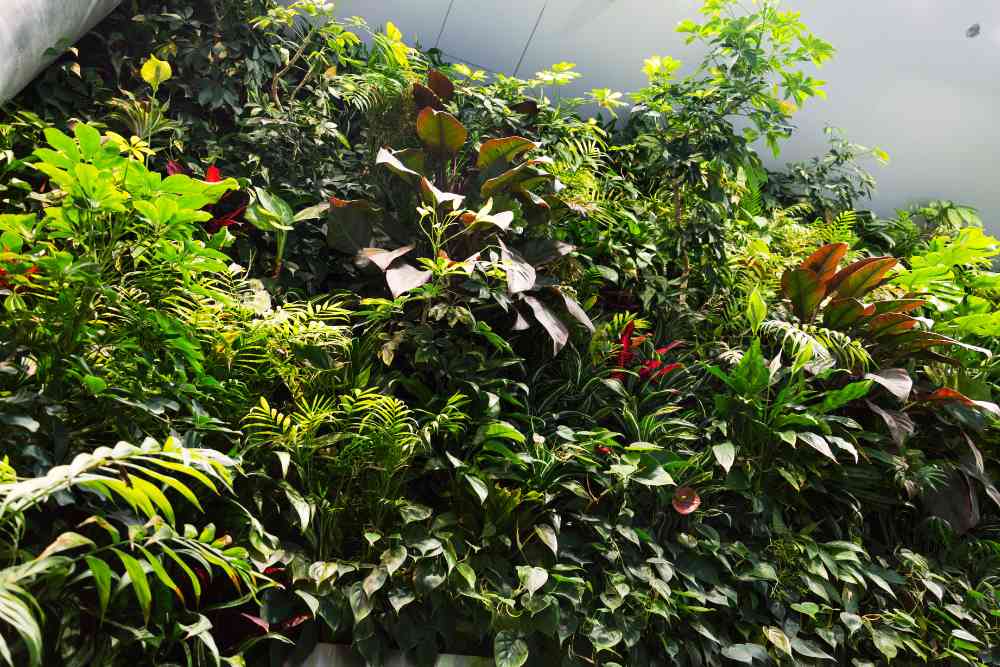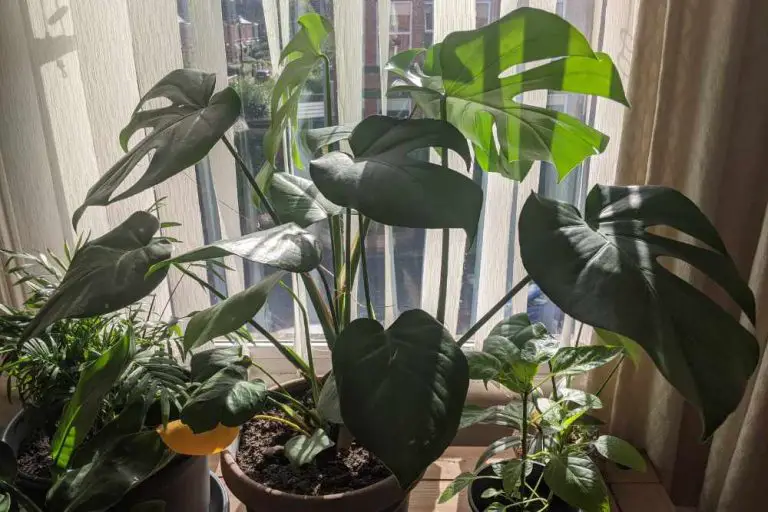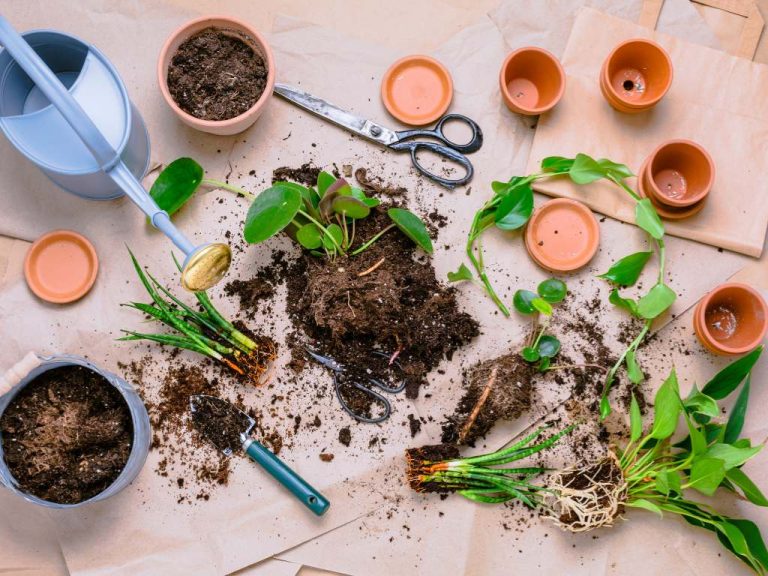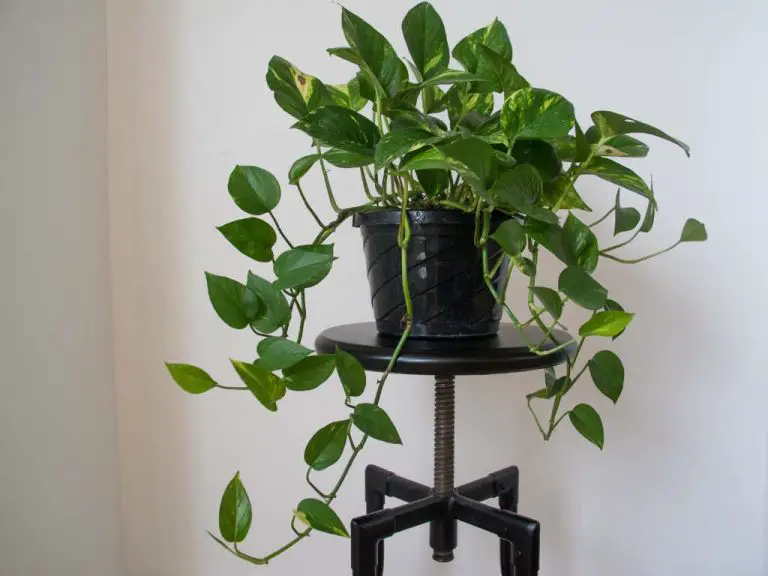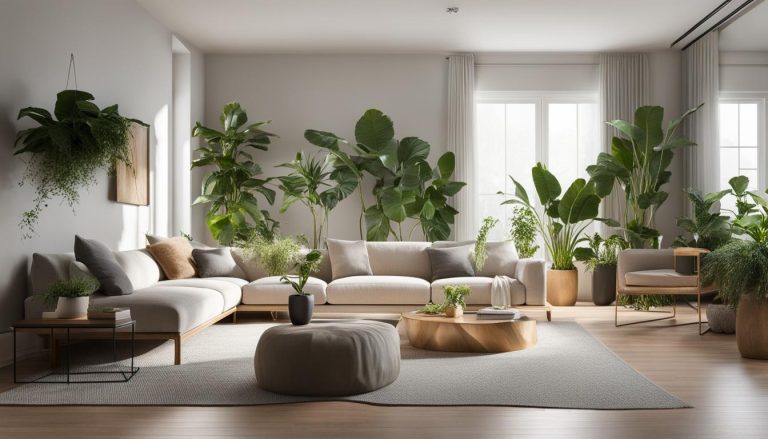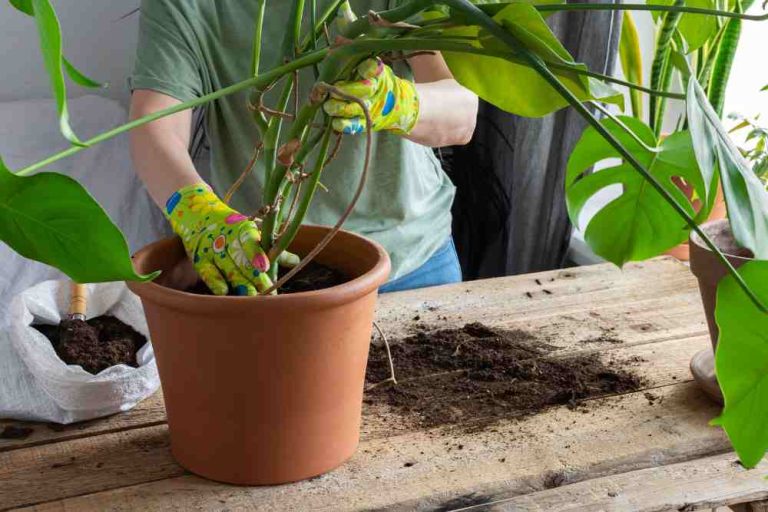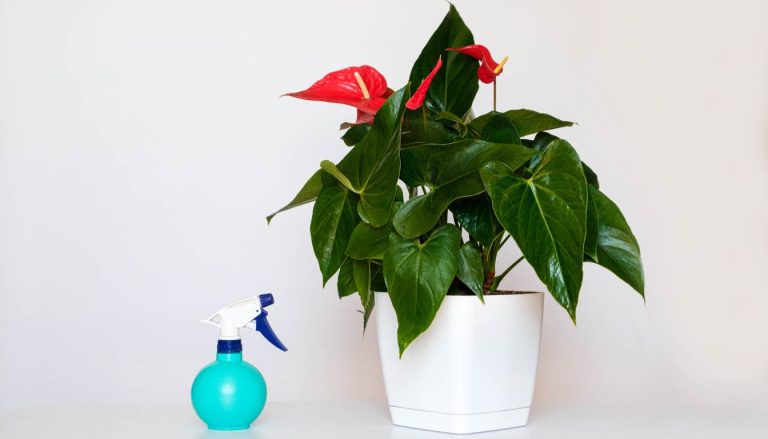14 Best Plants For Indoor Vertical Garden: Greening Up Your Space
Vertical gardens are a wonderful, adaptable way to grow many plants in a small area. This article gives you the 14 top best plants for indoor vertical gardens. The term “vertical gardening” refers to growing plants vertically with the aid of supports with a vertical form or shape.
However, if you are unsure which plants to use, we can assist you because not all plants are suitable for all vertical gardens.
We advise choosing plants that need about the same amount of water and sunlight. Continue reading our article if you want to learn the best ways to grow these plants because we’ll give you detailed solutions and recommendations so you can quickly select the right plant for you. Vertical gardens are considerably easier to manage than traditional gardens because of their location and the fact that you will spend less time-fighting pests and diseases.
What you should know about Vertical Gardening
In vertical gardening, employ buildings or columnar trees to define hidden places waiting to be found or create garden rooms. You may grow vines, flowers, and vegetables in vertical garden pots using trellises or enormous containers linked to the ground. This requires considerably less area than traditional gardening does.
In addition to gardeners with big traditional grounds, apartment residents, urban gardeners with limited space, and gardeners with disabilities can all benefit from vertical gardening using upright structures. Small-stature houseplants can be grown indoors as vertical gardens by constructing living walls, which add a tapestry of color and texture and purify the air.
Houseplants cultivated in vertical gardens provide much-needed humidity in cold winter climates during the months when the furnace operates and dries up the air. Vertical gardens and living walls are being added inside and outside hotels and business buildings more frequently.
Vertical gardens promote adequate air circulation even if they require more regular irrigation. The most recent trend in gardening is green walls, another type of vertical garden design idea. In some cases, a modular design allows plants to grow inside the structures, while others are just walls covered in climbing plants.
Vertical gardening needs metal framing, a stiff plastic sheet, and felt to create a vertical plant wall or garden. The vertical plant wall’s frame can be hung on a wall or left alone. The hard plastic that is bonded to the frame waterproofs the wall. The felt uniformly distributes water and fertilizer, allowing the plants’ roots to flourish. Other growing factors, including light, influence the choice of plant.
In some plant wall systems, irrigation systems and areas for soilless potting material are included. Vertical plant walls need to be pruned, dusted, weeded, and occasionally have plants replaced in addition to being watered and fertilized. A structural specialist should be consulted to ensure your wall can support the weight of vertical plant walls or gardens.
There is no distinction between watering vertically grown plants versus watering your typical potted plants or herbs. What kind of flora you select will be the only factor in the end. Generally, if you choose a decorative variety, it will need watering once or twice a week, but if you choose to plant herbs like basil, mint, or something similar, it will need watering every other day.
Regardless of the situation, you should always read the care instructions before buying any plants. You have two options: install a drip irrigation system or water by hand. People who appreciate having a natural indoor garden but lack time to maintain it should use the self-watering system.
1. Pothos
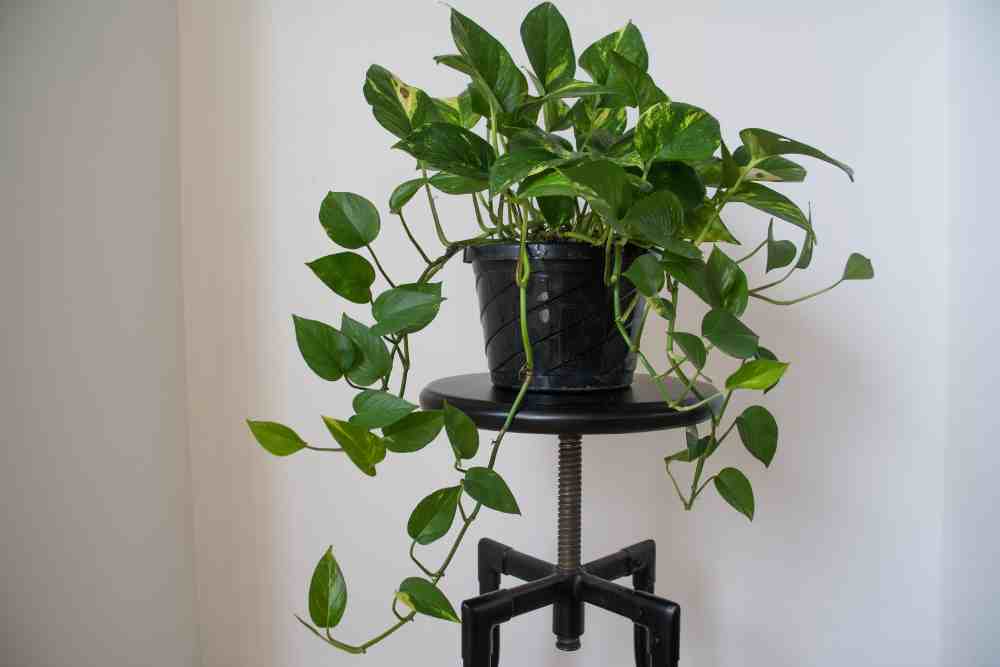
This beautiful plant is our top pick for indoor vertical gardening. This vining plant’s bright, green heart-shaped leaves make it essential for vertical gardens. Pothos plants don’t need much care because of their long lifespan and low maintenance requirements. Pothos plants are hardy, making them a suitable choice for regions with indirect sunlight and everyone, even those without gardening experience.
These require very little maintenance and light to thrive. The plant will need watering when the top layer of the soil dries out, which typically takes place every 7 to 10 days. 20 feet is the maximum height of pothos plants. When a pothos is planted indoors, its long vines twist around the pot like snakes’ crawling legs. Look for cultivars with green foliage marked with white, cream, or gold or with neon yellow, blue, or neon blue leaves.
Money plants, often referred to as Golden pothos, feature green foliage with creamy-yellow dots or markings, which looks wonderful when arranged vertically. The glossy green leaves at the tips may become yellow near the roots depending on the quantity of light they receive throughout their lifetimes. The finest part about golden pothos cultivation is how well it filters the air in the house. Devil’s ivy is another name for it.
This plant can be hung or grown vertically. Once it starts to develop, your only options are to transplant it and use it to decorate every room of your house or to give more. The semi-shadowy environment and clean, moist soil are requirements for growing golden pothos.
However, since the leaves will have more patterns on them, it is still desirable to make them a brighter area. We can reproduce by placing cuttings in the water and waiting for them to release their roots. Winter may be particularly harsh for the golden creeper.
2. Lipstick Plant
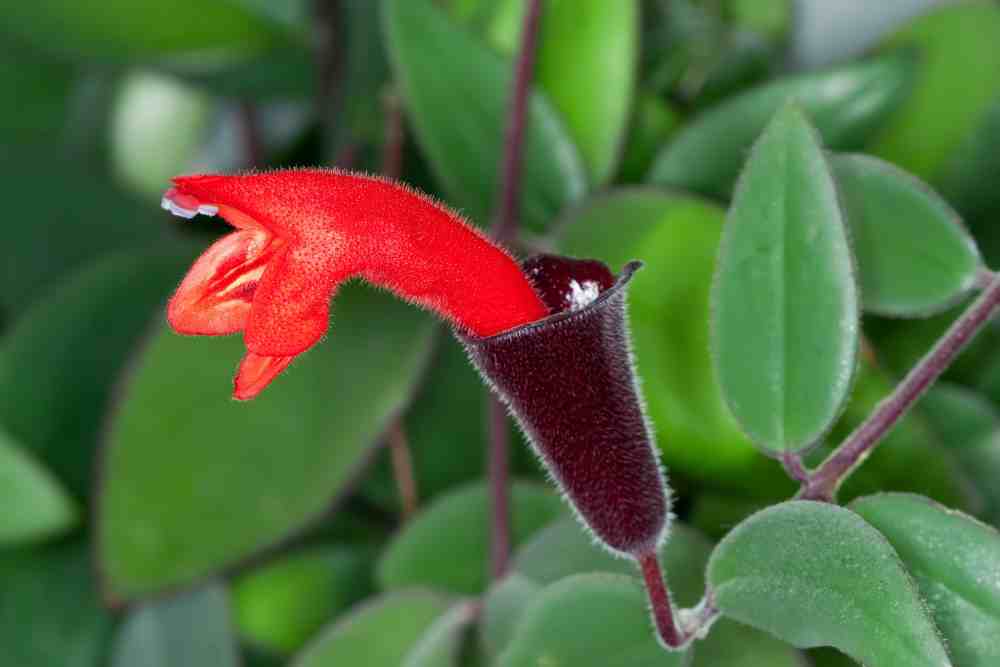
The lipstick plant is an eye-catching ornamental perennial indoor plant with glossy green foliage and red flowers that resemble lipsticks and constantly bloom all year. It is a member of a class of dropping-shaped, blooming indoor plants that have thick, glossy-leathery leaves and tubular-shaped, red blooms. At the branches’ tops, it blooms profusely. It may be taken outside during the summer but shouldn’t be left in direct sunlight.
It prefers a light spot in the winter. It waters once every week throughout the entire year. Irrigation (humidity) is preferred multiple times per week. It can be relocated each spring, but only into a one-size bigger pot.
It grows best in hanging pots because of its falling nature. This plant may be trained to trail or cascade down a vertical wall and look wonderful doing so. This trailing plant will look less scraggly and encourage healthier, fuller growth with a little gentle pruning now and then.
For nutrition, it is sprayed with liquid fertilizer for blooming plants in May through September every 15 days, while once a month is sufficient in the remaining months. It is best to avoid moving when buds are forming because they could fall off.
To create greater branching, the stem ends can be pruned in the spring. This plant comes in many different types, but they all require the same care. Finally, you’ll enjoy the vibrant appeal that this perennial plant adds to your house.
3. Caladium
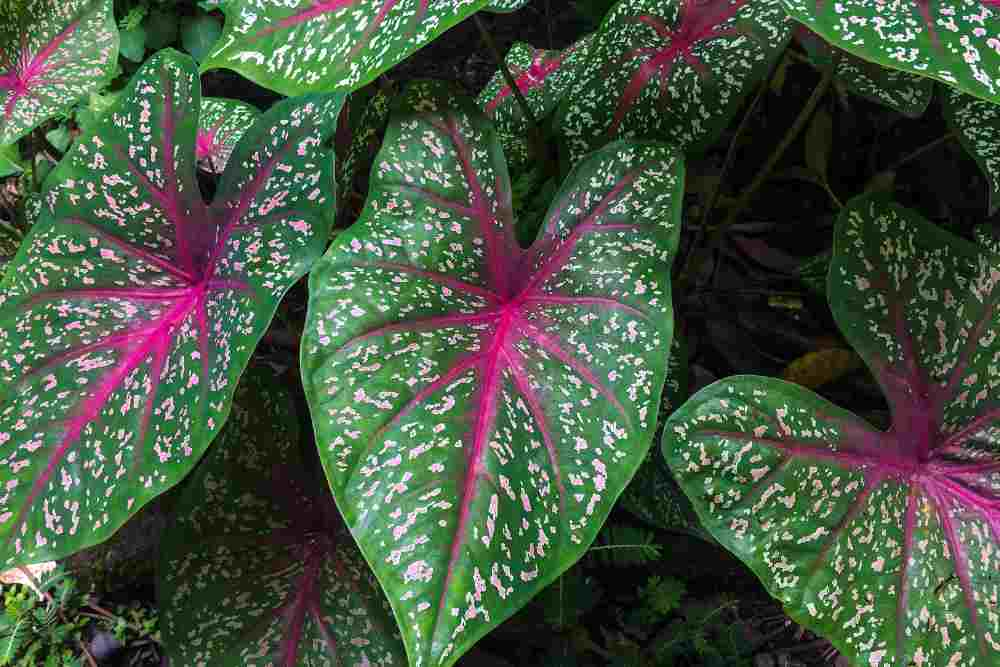
Caladium is a fantastic plant for tiered container gardening. Large, heart-shaped leaves are often green, white, and pink on these plants. Caladium is a plant that may be grown in totally vertical gardens, such as living walls, with the right support.
Caladium is ideal if you want to add certain plants that need shade because of their big leaves, which can protect other plants. Even when flowers aren’t in bloom, this plant is fantastic for adding a splash of color.
4. Hosta

Hosta is a hardy perennial with beautiful leaves. It became extremely popular after for places in shaded gardens due to various varieties. The wide, heart-shaped leaves are various shades of green, gray, blue, yellow, or white with yellow or white trim. Some varieties can reach heights of three feet and widths of more than five feet.
White or purple blooms are seen on tall branches that emerge from the center of the rosy shrub. Depending on the variety, they appear between June and October and remain for a few weeks. Hosta is a low-maintenance plant that will do well in any garden soil with adequate water permeability.
Despite being a shade plant, it will thrive in locations exposed to the morning sun. It reproduces by dividing the plant in the spring, unlike certain perennials, this process is not required every year. Hosta is cultivated in bigger culture containers, near water surfaces, and in flowerbeds where it is sown alone or in clusters of multiple plants.
It is densely planted as a blanket of soil beneath the large canopy of trees, whose roots and shade make grassland impossible to thrive. Its beauty is frequently harmed by snails eating the leaves, therefore, check for them on the plantation and take preventative measures.
5. Baby’s Tears
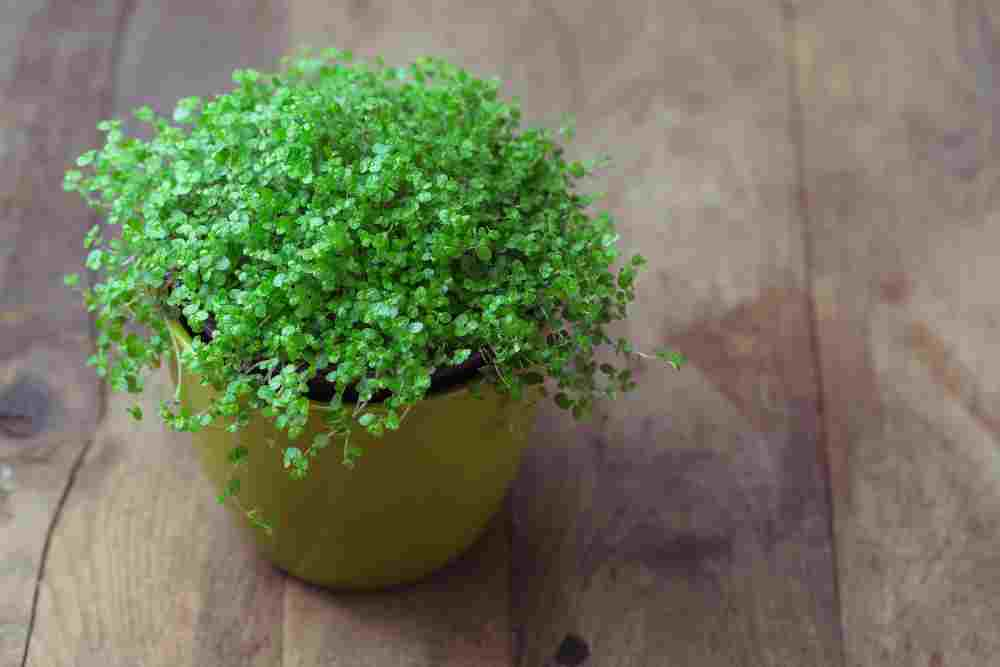
Baby’s tears is a plant that is frequently planted as a decoration for our homes, businesses, and other buildings. Today, various plants have various leaf colors, ranging from light green to dark green to silver and gold.
It is possible to cultivate Baby’s tears at home, in a terrarium, and while growing bonsai, it covers the pot’s surface. Additionally, it is cultivated outside in regions with cool winters. It makes an excellent covering for rocky garden pond shorelines and pathways. But avoids direct sunlight exposure and prefers excellent lighting. It prefers shady areas. Near the north-facing window, it thrives well. It occasionally needs spraying because it cannot survive dry air.
Direct watering is also not its favorite. More irrigation is needed in the spring and summer, while less watering is needed in the winter. Adding water to the pot’s plate is the best way to water it. Additionally, for growth and development, it needs a temperature of roughly 59°F. The temperature should not be higher than 77°F or lower than 46°F.
Contrary to its name, this charming home will make you and your family happy. This little trailing plant is incredibly easy to care for and would look wonderful in a hanging planter or a vertical garden. These low-maintenance, quick-growing plants are incredibly delicate, with roots that are easily harmed by rot or breakage.
Remember to provide lots of water to your baby’s tears if the soil becomes dry and if you want them to flourish. These small sprawlers in fresh green grow best in settings with a bit of humidity and have small leaves. They grow well when planted outside, but they also do well in an indoor vertical garden.
6. Fern
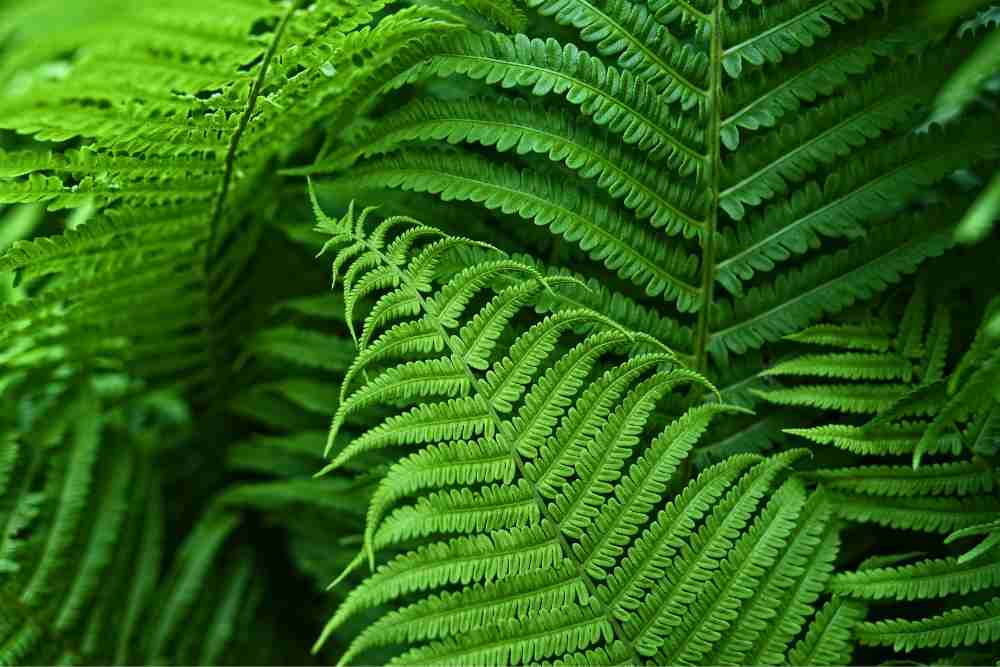
House ferns are being utilized more and more as attractive plants because of their distinctive appearance, which adds a sense of freshness to any home. The group of the world’s oldest plants includes a particular species known as the fern.
Although there are many different kinds of ferns, house ferns are among the most well-known. The leaves of the home fern grow directly from the ground instead of having stems, which gives it its name. Anyone wishing to grow this fern at home must follow a few fundamental guidelines.
The most crucial thing to understand is that house fern grows best in locations without direct sunlight. It will thrive most effectively in a partially shaded flat area, preferably a room corner away from the radiator or climate.
To prevent drafts, it’s a good idea to keep ferns away from windows and doors that frequently open. Due to the high humidity requirements of house ferns, regular misting is also necessary, especially in the summer, in addition to regular watering. This plant requires a minimum temperature of around 59 °F for growth and development.
These odd plants are perfect for vertical gardens because of their propensity for trailing. Although some plants thrive in direct sunlight and dry soil, the great majority flourish in situations with some shade and regular watering. Because ferns are so widely available, it’s crucial to pick a kind that’s indigenous to your area to avoid introducing an invasive species.
Ferns like the sword fern (Nephrolepis exaltata), rabbit’s foot (Davallia fejeensis), and medusa (Nephrolepis obliterata) are excellent choices for indoor vertical gardens. More than 10,000 species of fern belong to the Polypodiopsida class, and each one is distinct in size, shape, and distribution.
Boston ferns are frequently confused with other plants, like sword ferns (Nephrolepis cordifolia), due to their glossy, leathery leaves and dark green coloration along the edges. Although they require little maintenance, ferns can be picky about the amount of water and light they need.
7. Crotons
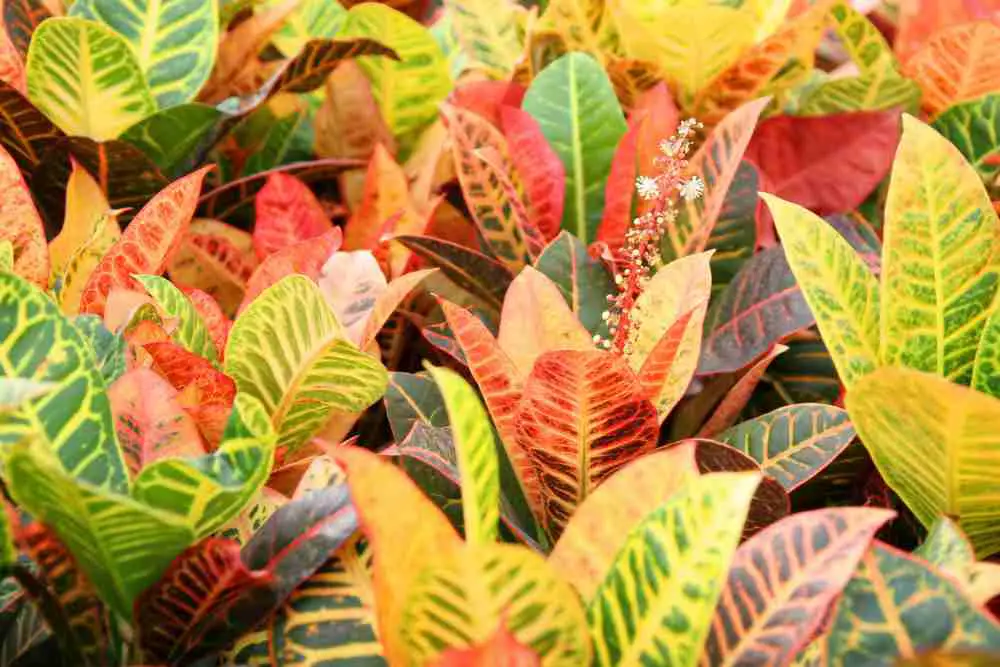
Every indoor garden needs to have this versatile plant. The Croton (Codiaeum variegatum) species gives rise to hundreds of different Croton plant varieties, each with its own distinct range of leaf colors and shapes. This vibrant evergreen shrub thrives well indoors and out, but indoor plants need full to dappled sunlight and plenty of hydration. Amazing croton plants are found in many different species, each with unique leaves, color schemes, and sculptural forms.
The leaves of crotons are frequently categorized as round, narrow, broad, oak leaf, twisted, and curled. Please pay close attention to the kinds you choose and educate yourself on bringing out their best forms for the best outcomes from your vertical garden. Croton plants are excellent interior decorations due to their distinct leaf patterns and colors.
Even though crotons are one of the most common indoor plants, they are only grown occasionally. This plant has been cultivated in many different forms, all featuring distinctive yellow ribbed patterns that connect in vibrant shades. The Croton flower is remarkable because its glossy leaves have amazing colors and various forms and sizes. The Crotons are among many people’s favorite houseplants.
Croton is one of the few indoor plants that need a light location in the flat, and successful cultivation requires keeping the same temperature throughout the year. For this reason, it’s critical to provide the plant with enough light, as the more light there is, the more stunning the color of the leaves will be. Even in the sun, Croton can stand—but not for long. Although beginners who are not as experienced with cultivating houseplants consider the Croton flower as a short-lived pot, it can last for years if given the right conditions for growth.
8. Philodendron
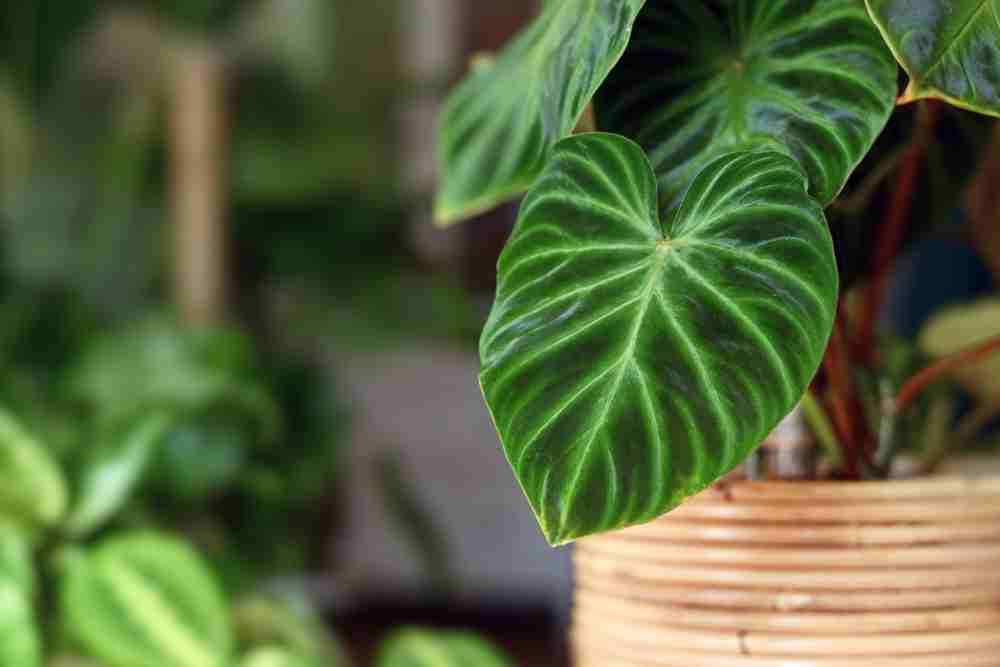
Another simple-to-grow plant that makes its needs known by oblique messages is the philodendron. The Philodendron genus has about 400 varieties of gorgeous leafy plants. Because of their enormous, glossy leaves, philodendrons are excellent for bringing a bit of the tropics inside. Similar to ferns, this plant has a wide variety of subspecies.
Both climbers and non-climbers are options, but a climbing philodendron is ideal for a vertical wall. Some philodendrons grow quickly, so if they start to expand on their containers, they could need occasional pruning. Spraying these plants frequently in winter may be required because they demand high humidity to grow.
9. Wandering Jew
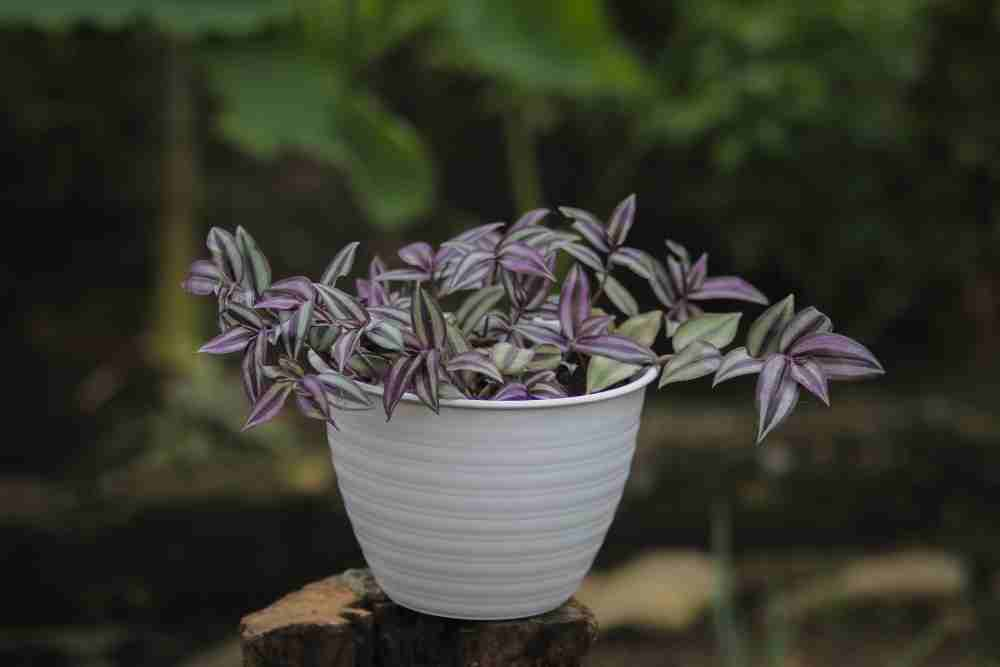
This plant makes a wise choice for hanging baskets because it does well in low light. Even in moist soil, the plant can survive and even thrive in extreme temperatures. The wandering jew (inch plant) is well-known for its brilliant purple-to-almost-black foliage. Because of the elegant way it cascades down, this plant is ideal for a vertical garden or hanging basket.
There are many different kinds, and they are all exquisite. Some have fluffy leaves and are a solid shade of green, some have stripes or veining, and some are purple. In spring, summer, fall, and winter, Wandering Jew’s aromatic blossoms are a wonderful addition to any indoor vertical garden. No matter how little space you have, we are confident that you will adore these plants and immediately start a collection of vertical gardens.
10. Wedding Vine
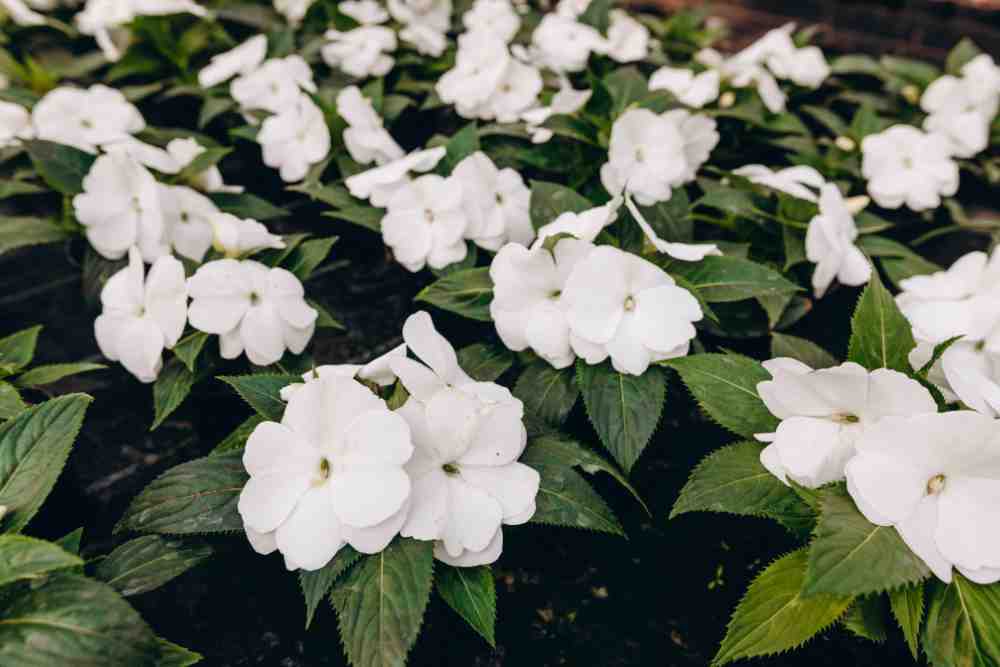
The wedding vine, sometimes known as jasmine Madagascar, is one of the most well-liked blooming plants for vertical gardens. It may thrive on a trellis or in a hanging basket because of its adaptability.
The wedding vine is indigenous to Madagascar and is a member of the (Apocynaceae) milkweed family. This plant frequently blooms with milky white flowers. The plant has a long lifespan in the tropical environment of Madagascar. However, it is also often cultivated inside homes as a plant.
Madagascar jasmine has about 4 inches long, oblong, thick, glossy, deep green, and leathery leaves. The leaves are stunning from both angles.
The Hawaiian Wedding Flower has tubular, star-shaped, clustered, waxy, fragrant, and crowded flowers. The plant can flower throughout the year if the right conditions (enough light, humidity, and temperature) are provided. For your wall garden, this is often a wonderful flower accent.
11. Air Plants
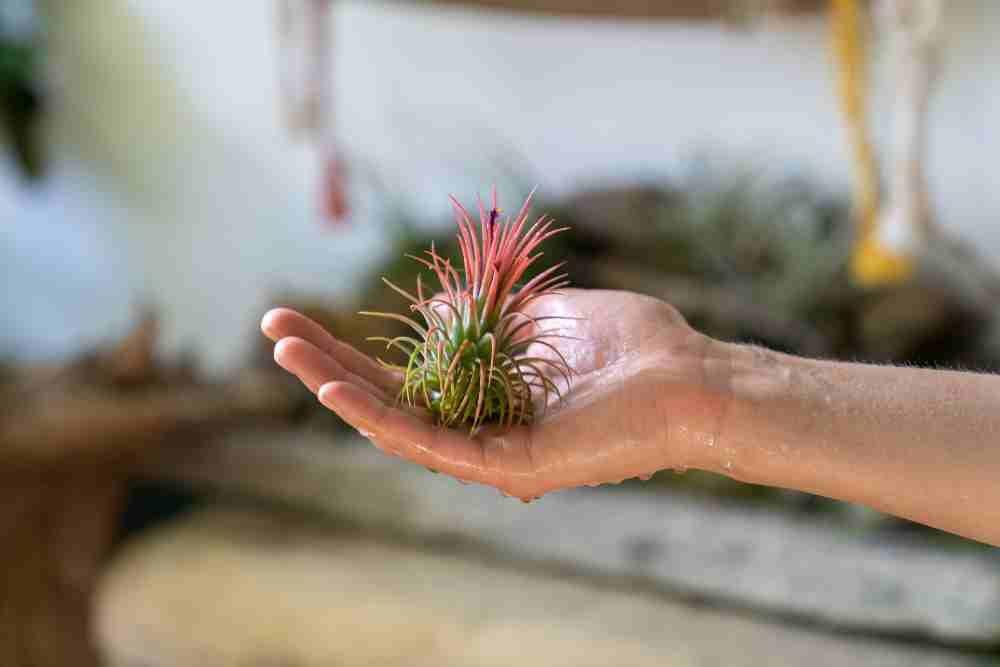
The family of bromeliads includes air plants. There are hundreds of interesting species of these cute little plants. Bright, indirect light is ideal for air plants. Instead of their roots, they use their leaves to absorb moisture and nutrients. According to the humidity conditions in your home, simply give the plants a dip in room-temperature water every two weeks. These are ideal for people who want to display their collection of tropical plants without the trouble of ongoing maintenance.
“Air plants,” or plants that can survive without soil, frequently grow above other plants, such as trees. Regular watering is necessary, and full or some indirect sunlight is ideal for them to grow.
You have a lot of creative freedom in presenting your air plant because they can be kept in any place without soil. A terrarium, a piece of driftwood, a rock, a wooden board, a curtain rod, a specific planter made just for air plants, a particular holder for air plants, or even just a special planter built for air plants can all be used to exhibit air plants.
12. Coleus
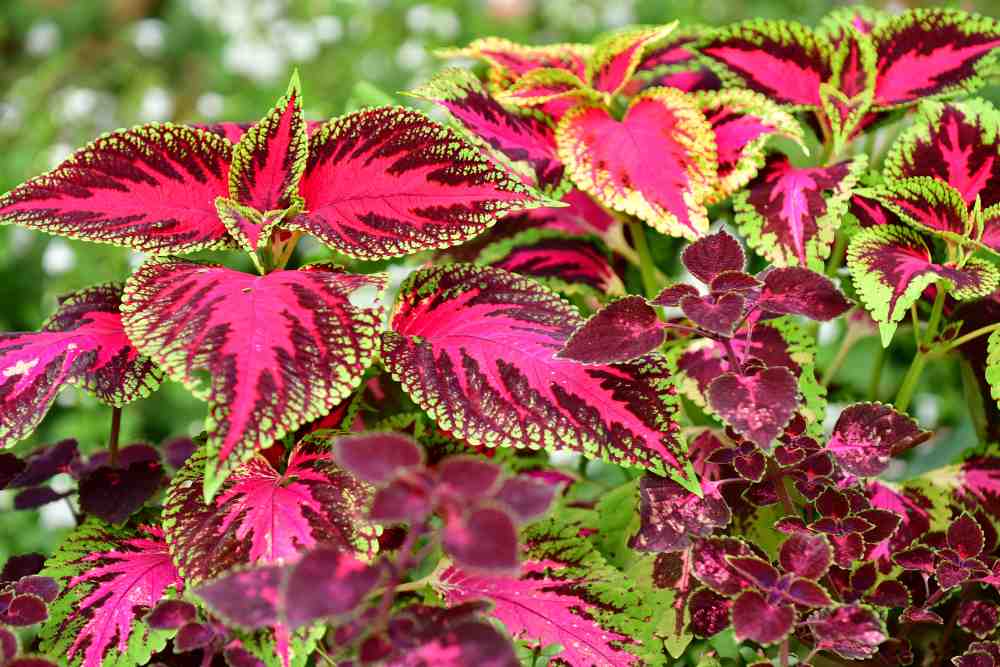
If the thought of having vibrant foliage appeals to you, but the caladium’s big leaves are too much, you might want to try coleus. While this plant is somewhat smaller than caladium, it has colorful leaves. Coleus is a great gap filler since it can fit in most spaces without overcrowding the arrangement. There is a coleus for any vertical garden because it comes in various colors, including intense purples, vibrant reds, and calm greens.
13. Herbs
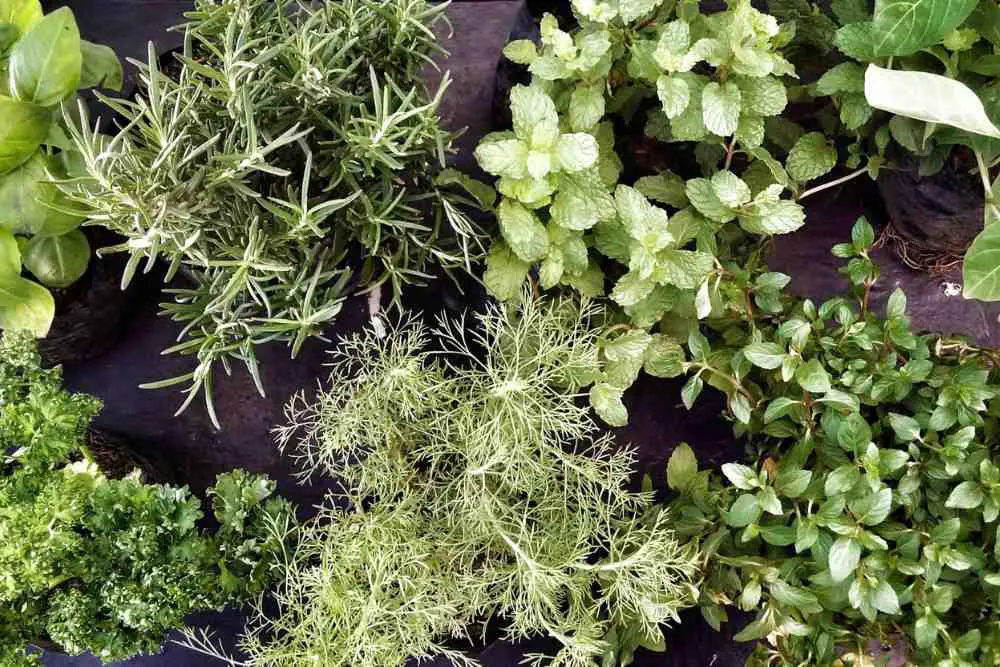
If you want to cultivate herbs in your home for use in the kitchen, consider using your vertical garden to grow some great herb plants. Choose species with shallow root systems and short life cycles if you wish to grow herbs. If your vertical garden will provide them with the greatest light, try growing some mint or lemon balm among your low-lighting herbs higher up.
Water-hungry plants should also be positioned close to the planter’s base to benefit from any extra water draining from the planter’s top. Herbs that are frequently cultivated in vertical gardens include Basil Chives, Cilantro Dill, Parsley, Rosemary, Sage, and Thyme grow best in partial shade, while sage, thyme, and cilantro thrive in full sun.
14. Vertical Succulent Gardens
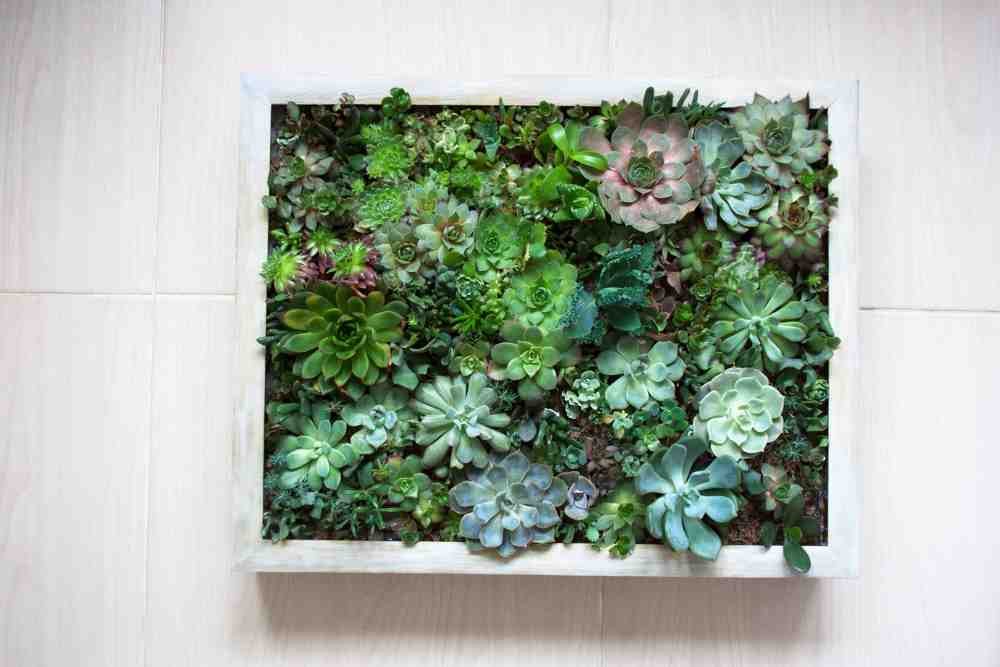
Succulents are popular among gardeners because they take up little space, are colorful, and are simple to care for. If you live in an area with severe water problems, succulents are a fantastic choice because they are both fire and water-resistant. These factors make succulents an excellent plant selection for vertical gardening.
Succulents are well recognized for having a firm and meaty exterior, which makes them excellent candidates for interiors. Any vertical garden can be easily customized to your needs by choosing the right succulents. There are several low-maintenance succulent species, which makes them perfect for beginning gardeners.
The thick, succulent foliage of these adorable tiny dandy plants, which come in a broad range of colors and shapes, is what makes them so well-known. These little plants are native to Mexico and Africa, where they thrive in sunny and dappled light situations. Succulents are the perfect plant for the irresponsible gardener because they can live without much water. A vertical garden can make excellent use of these hardy, sun-loving plants.
There will be plenty of compliments for these cute young ones. Compared to many other plants, succulents need less watering and other maintenance and add a lovely appearance to any setting. Succulents frequently give the impression of being designed specifically for gardeners who keep their outdoor spaces indoors. These plants can go without water for weeks while appearing vibrant and healthy.
- Curio rowleyanus (the “string of pearls”) – These creeping vines prefer soil that drains well and a little shade. Remember to keep them away from edible plants because a string of pearls is harmful.
- Crassula ovata – Often known as the lucky or jade plant, prefers mild shade and soil draining well.
- Echeveria elegant – Often known as the “white Mexican rose” or “Mexican snowball,” likes full or partial sun and well-drained soil.
- Sempervivum (houseleeks, liveforevers) – Although some members of this genus can occasionally tolerate moist soils, plants in this genus normally prefer dry areas with full sunlight and well-draining soil.
Vertical Gardening Considerations
Consider these factors when vertically planting outdoors:
Before you begin planting, firmly secure your vertical gardening structure to prevent tampering with the roots or stems of your plants. Plants that require more work or are heavier should go with stronger structures.
The vertical garden is shaded by tall plants or structures, which alters the growth patterns of neighboring plants. In a vertical garden, you can grow different plants grow. While certain plants require actual attachment to buildings, others, are twining and will wrap themselves around trellis openings. Because they are exposed to more light and wind in a vertical garden, plants may require more frequent watering and feeding.
- 20+ Chic Boho Bedroom Ideas for a Cozy and Stylish Retreat - June 20, 2024
- 12+ Modern Boho Living Room Ideas to Create a Unique Oasis - June 10, 2024
- 10 Stunning Canopy Bed Ideas for a Dreamy Escape - May 16, 2024

